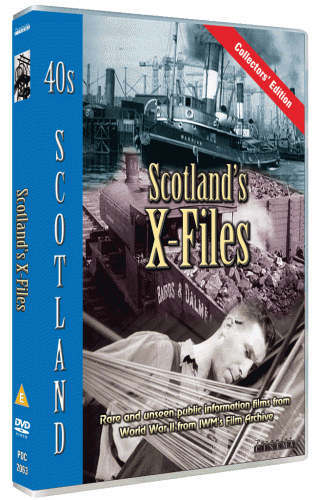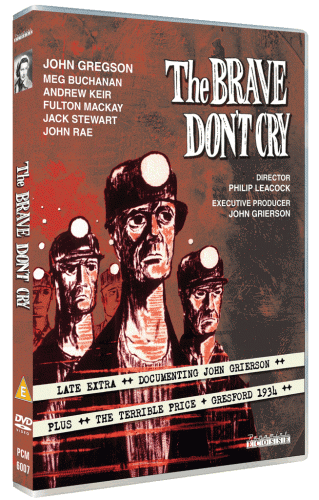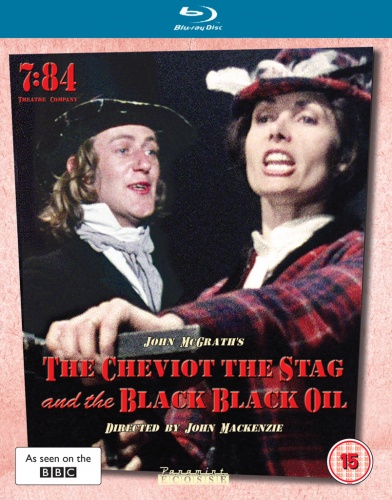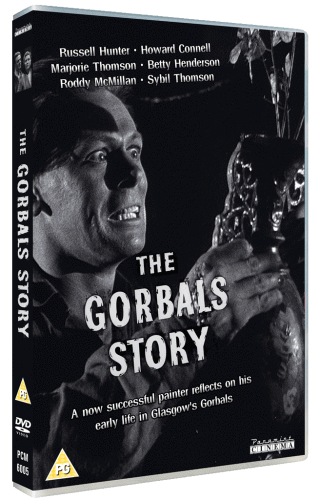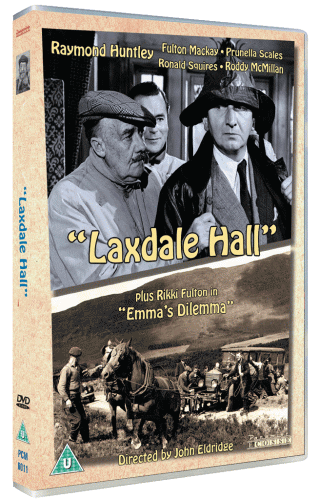40s Scotland: Propaganda and Public Information Films. The 1940s was a heyday for documentary film making, with many industrial film units, including those of Shell, BP, and ICI offering their servcies to the Ministry of Information and other government departments. Relatively few were made in Scotland and Panamint Cinema has published almost all of them in various DVD collections. |
Panamint Ecosse
| The Brave Don't Cry (1952), a reconstruction of the mining disaster at Knockshinnoch Castle Colliery Ayrshire in 1950, dramatises the tense events of the rescue of miners trapped underground after a pit shaft was flooded and nine men were lost. In September 1950, the walls of Knockshinnoch Castle Colliery cave in under a sudden surge of water, trapping 118 men underground. The only escape route is through a series of abandoned tunnels filled with toxic gas. Without enough time to pump out the gas, a dangerous rescue plan is formed by mine inspector John Cameron (John Gregson) and miner's wife Margaret Wishart (Meg Buchanan). With limited breathing equipment on hand, the miners must make their way up to the surface three at a time. The film features actors from the Glasgow Citizen's Theatre. The film was premiered under its new title at the Edinburgh Film Festival in August 1952, and also shown at the Venice Film Festival that year. |
| The question “Who owns the land?” lies at the heart of writer John McGrath’s classic 1973 play The Cheviot, the Stag and the Black, Black Oil. But to appreciate the remarkable sense of political power and urgency with which this work poses that query, we might also ask ourselves who or what owns the play. After all, the cast of director John Mackenzie’s 1974 BBC TV adaptation includes both professional actors and hourly-paid oil riggers; historical reconstruction rubs shoulders with contemporary documentary interview; human tragedy and brutality alternates with music hall vitality and hilarity; a performance that talks about the past also has a lot to say about the present. At the levels of content and form alike, The Cheviot has a strong claim to be the most provocative, intelligent and enjoyable screen representation of post-1746 Highland history ever made. |
The Brave Don't Cry (1952), a reconstruction of the mining disaster at Knockshinnoch Castle Colliery Ayrshire in 1950, dramatises the tense events of the rescue of miners trapped underground after a pit shaft was flooded and nine men were lost. In September 1950, the walls of Knockshinnoch Castle Colliery cave in under a sudden surge of water, trapping 118 men underground. The only escape route is through a series of abandoned tunnels filled with toxic gas. Without enough time to pump out the gas, a dangerous rescue plan is formed by mine inspector John Cameron (John Gregson) and miner's wife Margaret Wishart (Meg Buchanan). With limited breathing equipment on hand, the miners must make their way up to the surface three at a time. The film features actors from the Glasgow Citizen's Theatre. The film was premiered under its new title at the Edinburgh Film Festival in August 1952, and also shown at the Venice Film Festival that year. |
| In 1949, when The Gorbals Story was filmed, cinema audiences were familiar with Scotland as a land of history and romance, with wild landscapes, populated by wilder natives, who talked in some unintelligible, often comic dialect, and by dashing heroes and beautiful heroines, who spoke with reassuringly cut-glass English accents. David Niven had wrapped himself in tartan the previous year as Bonnie Prince Charlie. Brigadoon was a hit on Broadway and the London West End and a film version would soon be delighting audiences around the world. The Gorbals Story presented a very different image of Scotland. It was set not in the heathery Highlands or misty Islands, but in the slums of Glasgow. Its characters were not Jacobite princes or young romantics seeking love and a simpler way of life, and liquor was not merely a comic plot device. Its characters were the men and the women packed together in the teeming tenements just south of the Clyde, sharing their living space with rats whose presence in the bed may offer some warmth on a cold night, according to one character. |
If Laxdale Hall had been an Ealing comedy it would probably have attracted a lot more critical and public attention over the years. It shares a similar theme with several Ealing classics of ordinary people rebelling against officialdom, boasts a great cast and marks the screen debuts of both Rikki Fulton and Prunella Scales, as well as a very early appearance by Fulton Mackay. And indeed it might well have been an Ealing comedy. Eric Linklater originally devised the story for Sir Michael Balcon at Ealing Studios, which had of course had a major hit with Whisky Galore!, which came out in 1948. Linklater subsequently turned the story into a novel, published in 1951. |
